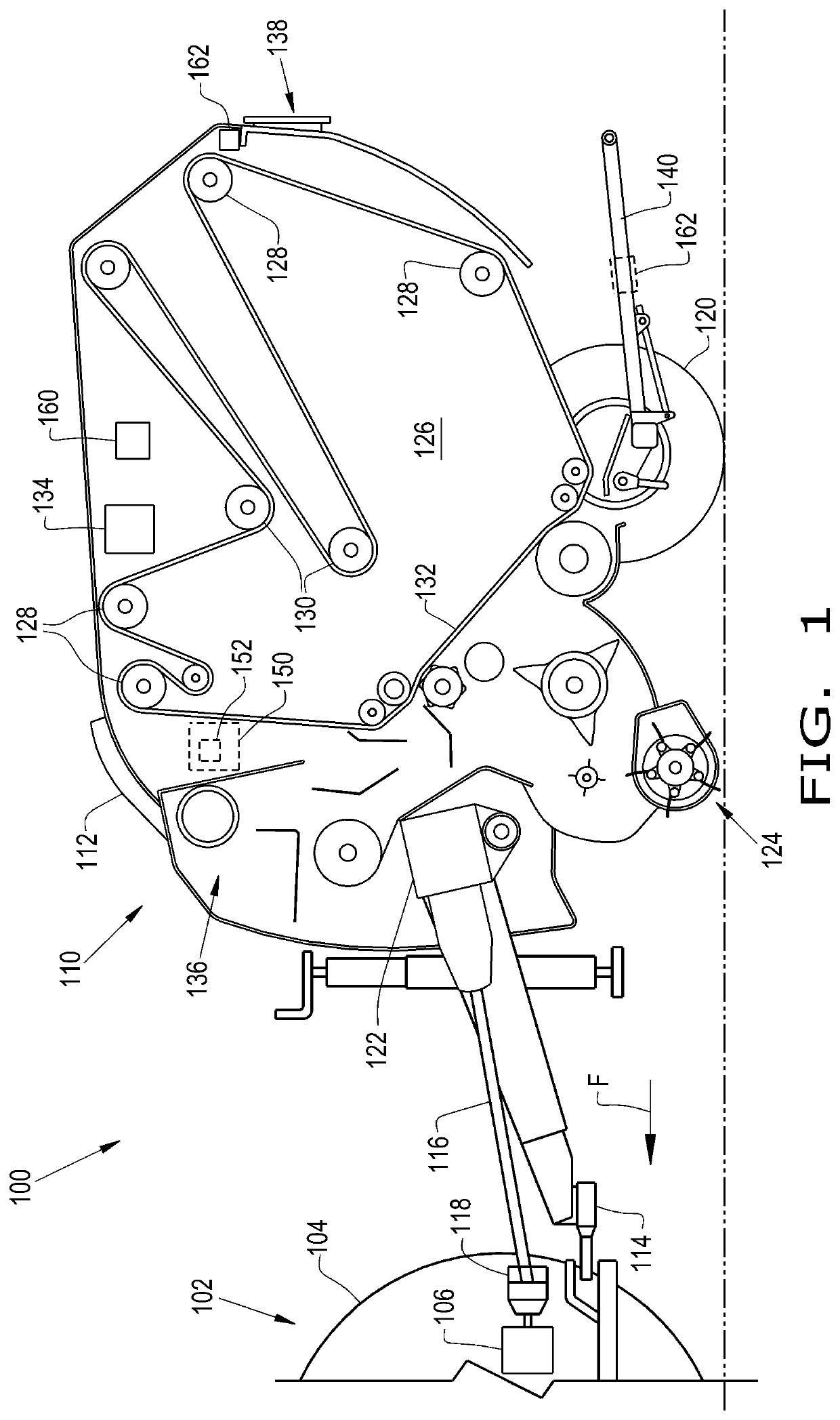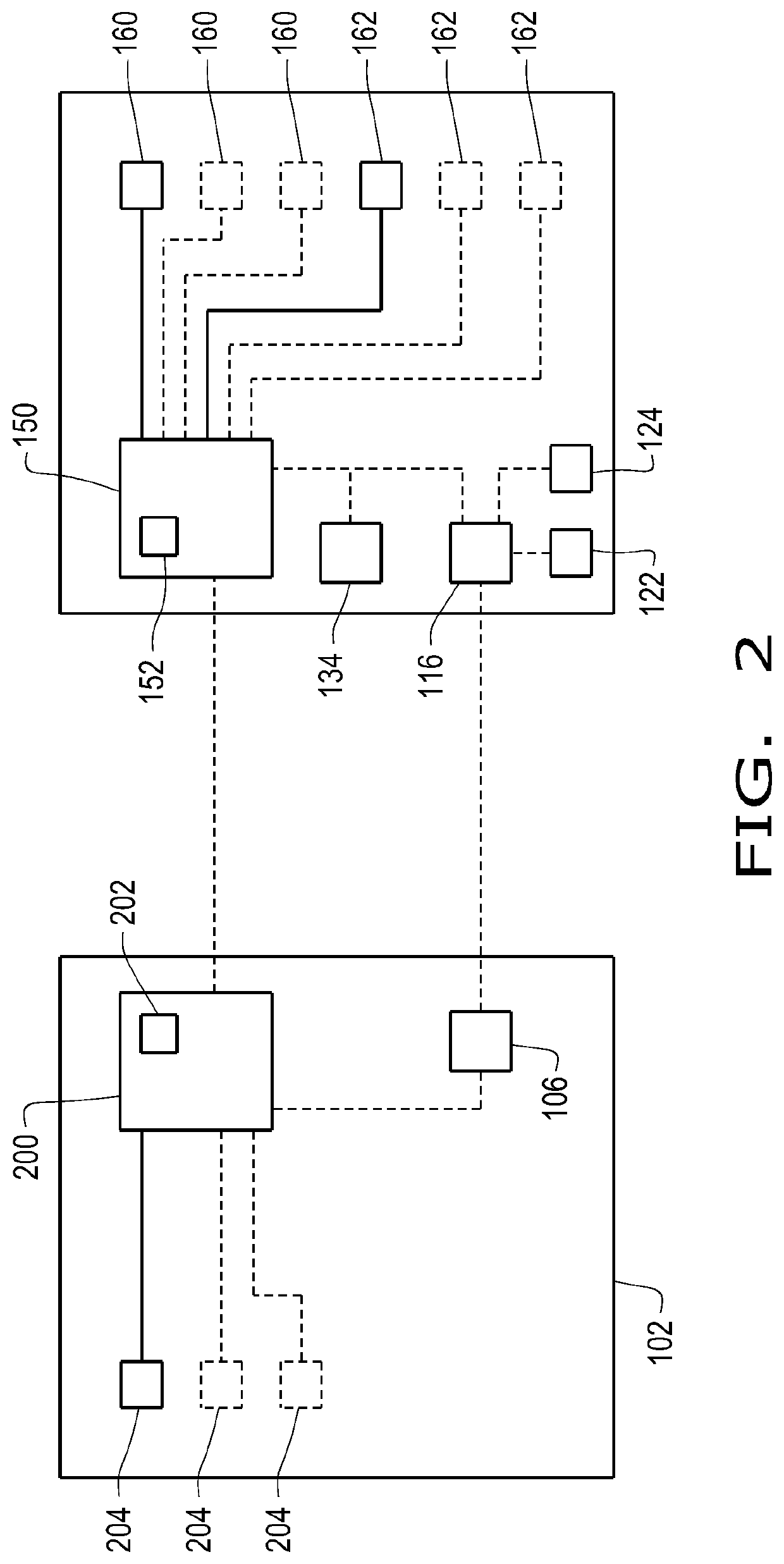Method and control system for controlling baler power-take-off speed
a baler and power-take-off technology, applied in baling, application, agriculture, etc., can solve the problems of limited baling speed, inability to optimize power consumption, and inactive adjustment of conventional balers, so as to reduce crop damage, fuel consumption, and damage to balers. , the effect of increasing the pto speed
- Summary
- Abstract
- Description
- Claims
- Application Information
AI Technical Summary
Benefits of technology
Problems solved by technology
Method used
Image
Examples
Embodiment Construction
[0014]The terms “forward”, “rearward”, “left” and “right”, when used in connection with the agricultural assembly and / or components thereof are usually determined with reference to the direction of forward operative travel of the agricultural vehicle, but they should not be construed as limiting.
[0015]Referring now to the drawings, and more particularly to FIGS. 1-2, there is shown an agricultural baling assembly 100. The agricultural baling assembly 100 generally includes an agricultural vehicle 102 and a baler 110 connected to and towed behind the agricultural vehicle 102 as the agricultural vehicle 102 travels in a forward direction of travel F.
[0016]The agricultural vehicle 102 generally includes a chassis, a prime mover, wheels and / or tracks 104, a tractor power-take-off (PTO) shaft 106, a controller 200 with a memory 202, and at least one operating condition sensor 204. The at least one operating condition sensor 204 may include any desired sensor such as a ground speed sensor...
PUM
 Login to View More
Login to View More Abstract
Description
Claims
Application Information
 Login to View More
Login to View More - R&D
- Intellectual Property
- Life Sciences
- Materials
- Tech Scout
- Unparalleled Data Quality
- Higher Quality Content
- 60% Fewer Hallucinations
Browse by: Latest US Patents, China's latest patents, Technical Efficacy Thesaurus, Application Domain, Technology Topic, Popular Technical Reports.
© 2025 PatSnap. All rights reserved.Legal|Privacy policy|Modern Slavery Act Transparency Statement|Sitemap|About US| Contact US: help@patsnap.com



